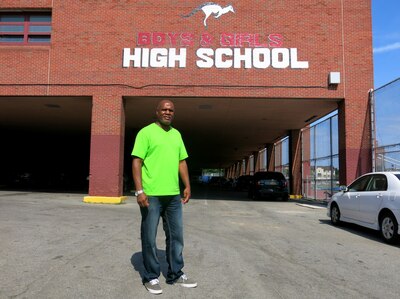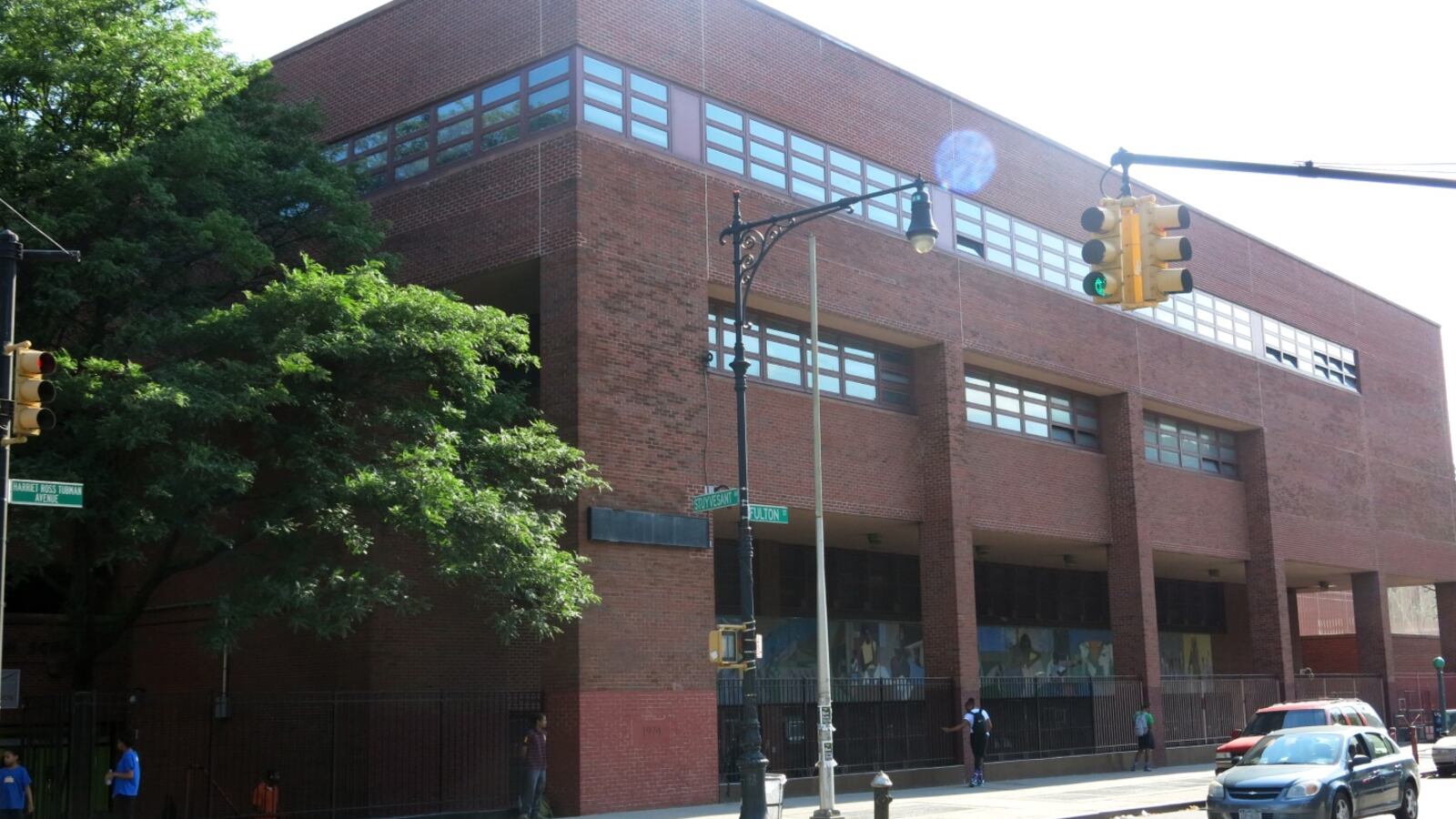The red-brick colossus known as Boys and Girls High School has stretched out over a block of Fulton Street in Bedford-Stuyvesant, Brooklyn since the 1970s.
Now, the school looms over the administration of Mayor Bill de Blasio and his schools chief, Carmen Fariña, who must decide how to handle a historic high school that has watched its enrollment dwindle from 2,300 to 750 students in the past five years while only graduating about four in 10 students each spring.
Boys and Girls is one of many troubled schools that the new administration has pledged to help fix rather than shutter, in a direct rebuke of the previous administration’s frequent close-and-replace approach to struggling schools.
But after six months on the job, Fariña has yet to announce how the department will prop up the city’s lowest-performing schools — a complicated question that could involve tackling thorny policies around the way schools are assigned students, how support networks oversee schools, and when floundering principals should be replaced.
As she crafts her plans, she faces a state-mandated deadline to launch overhauls at dozens of bottom-ranked schools by September. In the first signal of how she will try to balance support for those schools with interventions, city officials recently submitted a plan to the state to put Boys and Girls and another long-struggling school under special oversight — harkening back to an idea that Fariña and a top deputy endorsed two years ago.
Still, even at Boys and Girls, the details of the city’s intervention plans remain a mystery, said Principal Bernard Gassaway.
“It’s wait-and-see,” he said, adding that officials so far had simply promised more support. “It’s very important that the rhetoric is matched by action.”
As of this school year, 119 New York City schools rank among the bottom 5 percent in the state based on their state test scores and graduation rates, according to state officials. Each of those schools is required by next school year to begin carrying out an approved overhaul, which can include a redesign of teacher training and the school schedule, replacing its leader and possibly some staff, converting into a charter school, or shutting down.
The city has already received federal funds to overhaul 63 of the schools, a process that under former Mayor Michael Bloomberg often involved closing a school and replacing it with one or more new ones. That leaves the city with more than 50 city schools where it must enact overhaul plans by September. (That number will shrink this summer as some of the schools close, lose their struggling status, or receive federal improvement grants, the state officials said.)
Of those schools, two — Boys and Girls and Automotive High School in Williamsburg — have been bottom-ranked for at least five years without enacting an approved overhaul. The state calls those “out-of-time schools” and ordered districts to use one of six intensive interventions to improve them.
The city’s choice was to create an “alternate governance structure” for the two. This will involve putting them under the supervision of a single superintendent and could include granting the principals more leeway to hire and fire staff, providing more money for professional development, and lengthening their school days.

The city could eventually include more schools in this oversight structure, though officials said only the two high schools will be part of it next year. Fariña has insisted that she would not create a special district just for struggling schools.
But a plan she endorsed two years ago when she was part of a “school transformation” working group with Phil Weinberg, a former principal who now oversees the education department’s accountability efforts, does resemble the city’s new efforts.
That group rejected the Bloomberg administration’s closure policy, and called instead for a “Success Initiative zone” where the leaders at up to 60 struggling schools would adopt improvement plans, receive “targeted support” to enact them, troubleshoot problems with other leaders in the zone, and visit successful schools. The idea was for the city to spur reforms inside floundering schools without being too prescriptive, which was one criticism of a district designed for troubled schools under former Chancellor Rudy Crew, said Jon Snyder, who was part of the working group with Fariña.
“I think that’s the balance that Carmen and the Department of Education will need to strike,” said Snyder, a former dean of the Bank Street College of Education. “It’s about growing capacity — it’s not about mandating particular practices.”
With the plan for Boys and Girls and Automotive high schools in place, the city still must settle on interventions for the dozens of other state-identified bottom-tier schools.
The new administration is unlikely to choose to close any of the schools for now. De Blasio said recently that closure will only become an option “if we feel, after applying all the tools we have in a reasonable timeframe, that we can’t fix the problem.” One approved overhaul the city might consider calls for a school’s “redesign,” but allows for the principal and faculty to stay in place if they are deemed competent.
Still, many questions remain about Fariña’s broader strategy for troubled schools, including those that are stumbling but have not yet attracted the state’s attention.
For example, Fariña has said little about how she will approach high schools or how she might reconfigure the school-support networks that some say allow low-performing schools to slip through the cracks. She has also not indicated whether she will adjust admission policies to prevent certain schools from enrolling a disproportionate number of students with special needs or who are behind academically — a problem cited by Gassaway and the working group Fariña was part of.
The education department did not make Fariña available for this article. A spokeswoman did not offer details about the city’s plan for its struggling schools, but said generally that it would work with each school to identify its needs, then craft school-specific plans to address its “underlying issues.”
In his campaign platform, de Blasio said his administration would collaborate with the leaders of struggling schools until they are “deemed to be a failure.” At that point, he proposed sending in different principals with experience improving schools along with a team of seasoned educators.
But it remains to be seen how Fariña will decide which principals to work with and which to replace. Thomas Hatch, co-director of the National Center for Restructuring Education, Schools, and Teaching at Teachers College, said this is a challenge for every administration.
“For the most part,” he said, “we haven’t found the right balance between support and accountability.”
Sign up for Chalkbeat’s morning newsletter here.

